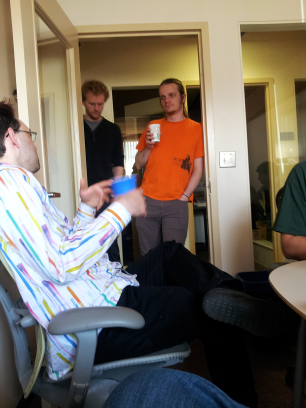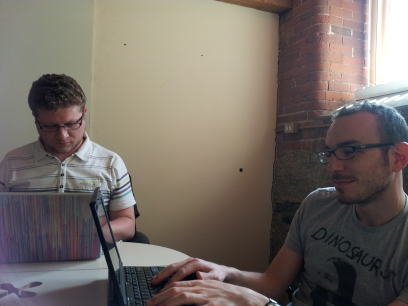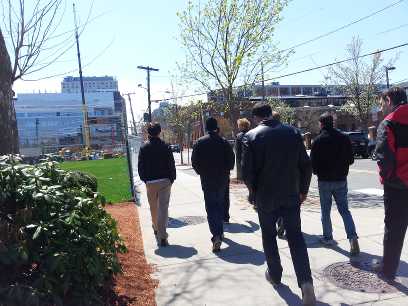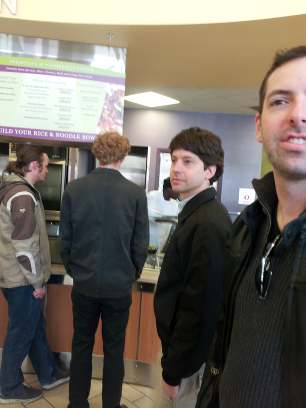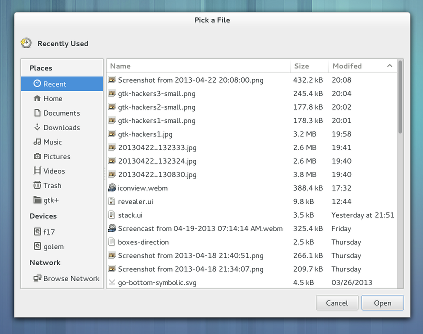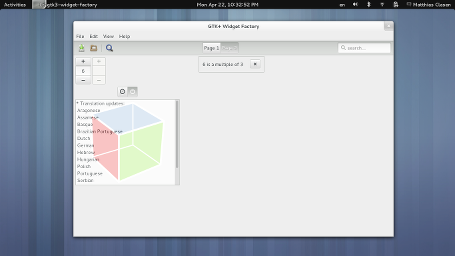I had to take a day off from the hackfest on Tuesday to get a few things done in the office. The GTK+ hackers surprised me by collectively jumping on the bus and coming out to visit me in Westford. How sweet ! Yesterday we were back in the OLPC offices for the last day – much faster to get to the airport from Cambridge…
In these last 2 days, we’ve discussed various non-technical topics, including Guadec planning, the 3.10 roadmap, regressions, etc. Before diving into these, here’s a little demonstration of scrolling under Wayland. This is a testcase we’ve used in evaluating drawing performance with the wip/simple-draw branch. It certainly shows that the Wayland backend is doing ok as far as drawing speed is concerned.
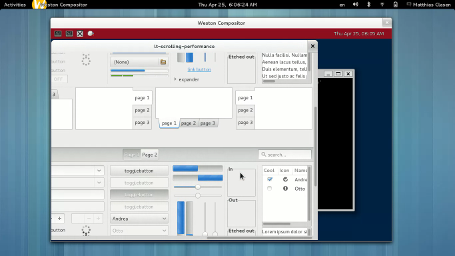 Our Guadec presence will include at least two or three GTK+ talks, and we’ll also have a Wayland BOF, which should touch on GTK+ topics as well. If you haven’t submitted a talk yet, do so this week !
Our Guadec presence will include at least two or three GTK+ talks, and we’ll also have a Wayland BOF, which should touch on GTK+ topics as well. If you haven’t submitted a talk yet, do so this week !
On regressions: There are a number of problems in git master currently. This includes growing infobars, the (temporary) loss of search in the file chooser, problems when drawing to client-side decorated toplevels, as well as numerous issues with window sizes. We are aware of these, and will hopefully have most of these addressed before too long.
Merging all of the big pieces early in the cycle gives us enough time to find and fix these problems before 3.10.
On that topic, we’ve made a list of things that we still hope to complete and merge for 3.10 (I wouldn’t quite call it a roadmap).
EggListBox:
- Alex will add support for row containers
- We can improve the separator API by turning separators into properties of the row container
- Model support should not block the initial merging
Simple drawing branch:
- This should be ready for merging soon
- The drawing model changes are considerable, but incompatibility should not be a problem unless you are using GDK without GTK+ (and who does that ?)
Support for hi-DPI displays:
- Alex has hardware to work on this
- the goal is to demonstrate it working at Guadec
Wayland tasks:
- Clipboard cleanup: Benjamin is working on moving GtkClipboard to GDK, so we can cleanly support multiple backends at the same time
- DND: a lesser priority, but also on Benjamin’s list
- Owen got frame synchronization working with Wayland at the hackfest, and the performance is good
- Client-side decorations: I’m going to introduce a second window again, to make things more compatible. widget->window will go back to being just the content area.
A few other things would be nice to get landed for 3.10, but these are less certain to make it:
- Notification API (Ryan and Lars)
- Action descriptions (Ryan)
- GtkBuilder / action integration (Ryan)
- Make GtkPathBar public and share it with nautilus (Federico)
Finally, there are things that really should be worked on, but don’t have a name behind them currently:
- Popovers: We do have a prototype for this in GtkBubbleWindow, but it needs love
- Touch: There are many details that we currently don’t get right
If you feel like you could be interested in working on either of these, meet us on #gtk+.
I hope to see most of the GTK+ team again at Guadec, this meeting was very productive.
